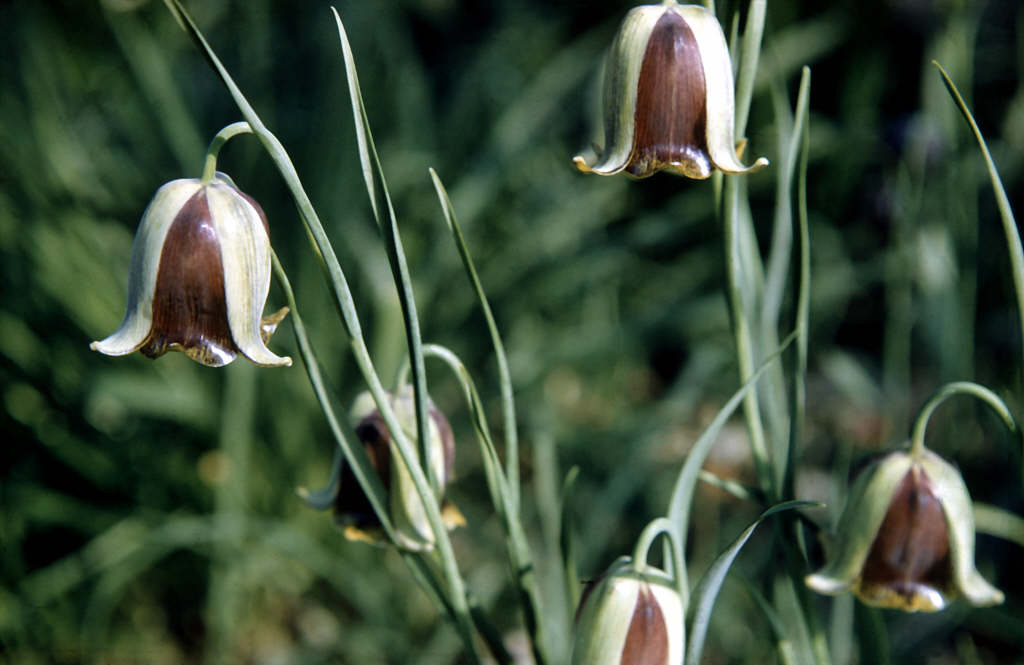Size
Ultimate height
0.1–0.5 metresTime to ultimate height
2–5 yearsUltimate spread
0–0.1 metreGrowing conditions
Moisture
Well–drainedpH
Acid, Alkaline, NeutralColour & scent
| Stem | Flower | Foliage | Fruit | |
| Spring | Green Purple | Green | ||
|---|---|---|---|---|
| Summer | Green | |||
| Autumn | ||||
| Winter |
Position
- Full sun
Aspect
South–facing
Exposure
Exposed or Sheltered Hardiness
H4Botanical details
- Family
- Liliaceae
- Native to GB / Ireland
- No
- Foliage
- Deciduous
- Habit
- Bushy
- Potentially harmful
- Ornamental bulbs, not to be eaten. Wear gloves and other protective equipment when handling. Pets: Ornamental bulbs, not to be eaten - see the HTA guide to potentially harmful plants for further information and useful contact numbers
- Genus
Fritillaria are bulbous herbaceous perennials with lance-shaped or linear leaves and nodding bell-shaped or bowl-shaped flowers that may be solitary or in racemes or umbels
- Name status
Correct
- Plant range
- Turkey to Israel
How to grow
Cultivation
A tolerant species suitable for a sunny border or rock garden. Needs fertile, well-drained soil and full sun
Propagation
Propagate by seed sown in autumn in a cold frame. Expose to winter cold until germination in spring, then transfer to a cold greenhouse. Grow on for 2 years in containers. Divide offsets, or collect and sow bulbils in late summer
Suggested planting locations and garden types
- City and courtyard gardens
- Cottage and informal garden
- Patio and container plants
- Rock garden
- Flower borders and beds
Pruning
Cut back when foliage turns yellow at the end of the season
Pests
May be susceptible to slugs and lily beetle
Diseases
May be susceptible to lily disease (Botrytis elliptica) and a virus
Get involved
The Royal Horticultural Society is the UK’s leading gardening charity. We aim to enrich everyone’s life through plants, and make the UK a greener and more beautiful place.
